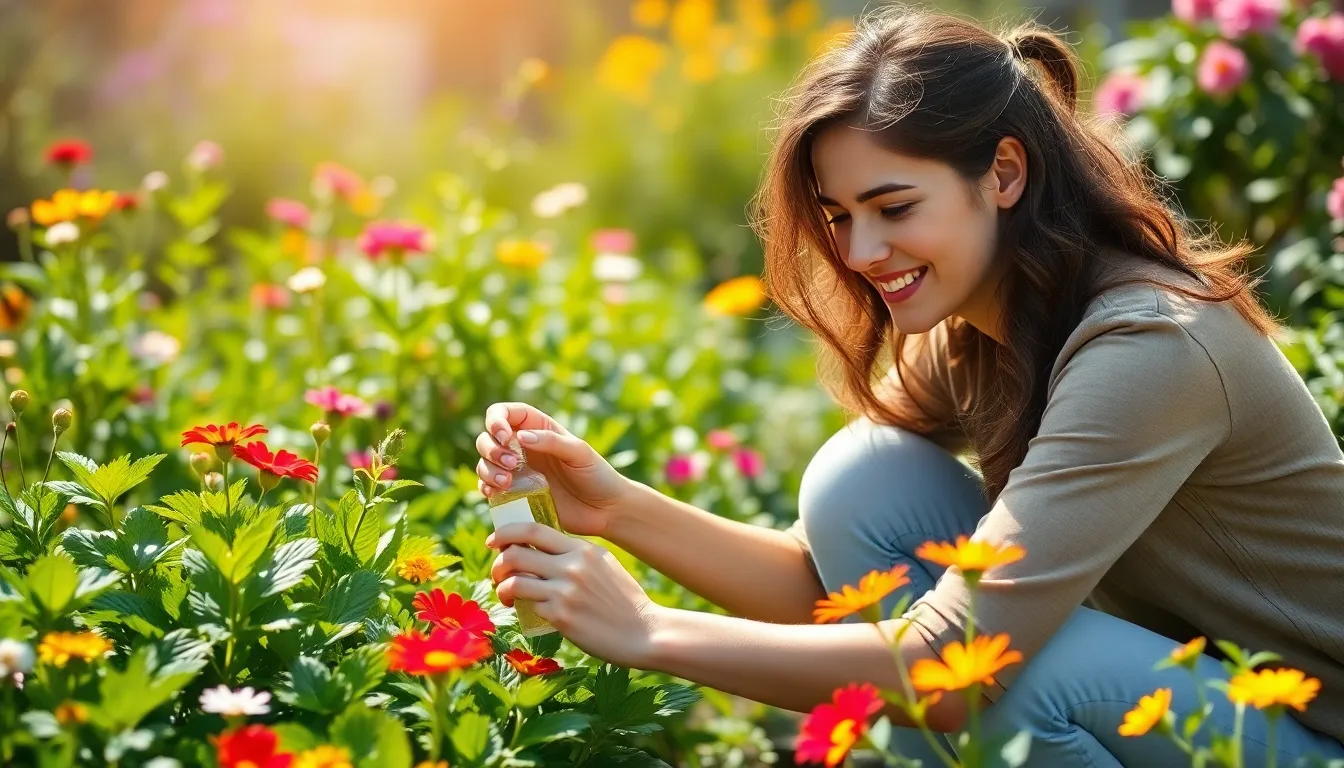Table of Contents
ToggleIn a world where pests seem to have a personal vendetta against our homes, finding a solution that doesn’t involve a chemical warfare strategy is crucial. Enter environmentally friendly pest control—a superhero in disguise, armed with nature’s finest tools instead of toxic potions. It’s like having a bouncer for your home that only lets in the good vibes while kicking out the creepy crawlies.
Imagine a pest control method that’s not only safe for your family and pets but also gives Mother Nature a high-five. With eco-friendly options, you can say goodbye to those pesky intruders without feeling guilty about your impact on the planet. So, if you’re ready to reclaim your space and keep the environment smiling, it’s time to explore the greener side of pest management.
Overview of Environmentally Friendly Pest Control
Environmentally friendly pest control utilizes strategies that minimize harm to the ecosystem. These methods prioritize non-toxic solutions that deter pests without using harmful chemicals. Incorporating practices like integrated pest management (IPM) combines cultural, biological, and mechanical controls to address pest issues effectively. Homeowners can adopt preventative measures, such as sealing entry points and maintaining cleanliness, to reduce pest attractions.
Natural pesticides, derived from plant-based or mineral sources, serve as alternatives to synthetic chemicals. Essential oils, diatomaceous earth, and neem oil provide effective responses against various pests while being safer for humans and pets. For example, using essential oils like peppermint can repel ants and spiders, ensuring a pest-free environment without toxic exposure.
Biological control agents, including beneficial insects like ladybugs and predatory wasps, also contribute to environmentally friendly pest management. These insects help balance ecosystems by preying on harmful pests, creating a natural form of pest control. When integrated into pest management strategies, these agents support a reduced reliance on chemical treatments.
Regular monitoring of pests aids in identifying potential infestations early. Employing traps or natural repellents can improve control while safeguarding the environment. Using these sustainable techniques fosters a healthier living space and promotes ecological well-being, encouraging readers to make mindful choices in pest management.
Importance of Sustainable Practices

Sustainable pest control practices play a crucial role in promoting eco-friendly solutions. These approaches prioritize health and safety while mitigating harmful environmental impacts.
Benefits to Health and Safety
Non-toxic pest control methods significantly reduce risks associated with chemical exposure. Individuals, including children and pets, benefit from safer living spaces. Implementing organic solutions, such as essential oils and plant-derived products, minimizes adverse health effects. Studies show that households using environmentally friendly methods report fewer respiratory issues and allergic reactions. Regular monitoring and preventative measures also enhance safety, creating a healthier environment for everyone. Adopting sustainable practices fosters peace of mind and supports overall well-being.
Impact on Ecosystems
Environmentally friendly pest control positively influences local ecosystems. Natural methods encourage biodiversity by protecting beneficial organisms. For instance, introducing predators like ladybugs helps control harmful pests without disrupting food chains. Sustainable practices also prevent soil and water contamination, maintaining habitat integrity. Research confirms that organic pest control methods contribute to healthier ecosystems, promoting resilient environments. By integrating non-toxic solutions, individuals promote ecological balance while effectively managing pests. Adopting these practices leads to thriving, sustainable ecosystems that benefit all living beings.
Methods of Environmentally Friendly Pest Control
Employing environmentally friendly pest control methods effectively minimizes harm to ecosystems. Homeowners often seek sustainable solutions that address pest problems without toxic chemicals.
Biological Control
Biological control utilizes natural predators to manage pest populations. Ladybugs, for example, prey on aphids, significantly reducing their numbers. Introducing these beneficial insects into gardens or homes can enhance ecological balance. Other agents include parasitic wasps, which target harmful pests like caterpillars. By leveraging these natural methods, individuals contribute to a healthier environment while effectively controlling pest issues.
Mechanical Control
Mechanical control methods focus on physical barriers and traps to eliminate pests. Sealing cracks and gaps in structures prevents entry, safeguarding homes. Utilizing traps, such as sticky boards or humane catch-and-release models, eliminates pests without chemical exposure. Regularly removing debris and maintaining landscaping also deters unwanted critters. These straightforward strategies reduce pest presence, promoting a safer living space without relying on harmful substances.
Cultural Control
Cultural control involves altering management practices to reduce pest attraction. Maintaining cleanliness in and around the home limits access to food and nesting sites for pests. Crop rotation and companion planting also disrupt pest life cycles in gardens. It’s crucial to monitor watering practices, as over-irrigation often creates favorable conditions for pests. Adopting these proactive measures fosters an environment that’s less conducive to infestations, benefiting both households and the local ecosystem.
Choosing the Right Solutions
Choosing the right pest control solutions requires careful consideration of the problem and its environmental effects.
Identifying the Pest Problem
Identifying the specific pest issue is crucial for effective management. Homeowners should carefully observe signs of pest activity, such as droppings, nests, or damage to plants. Monitoring these indicators allows individuals to pinpoint the type of pest invading their space. Specialized traps help in detecting infestations early, ensuring timely intervention. Consultation with pest control professionals can further clarify the extent of the problem and recommend suitable eco-friendly methods.
Assessing Environmental Impact
Assessing the environmental impact of pest control strategies is essential for sustainability. Homeowners must consider the effects of various methods on local ecosystems and biodiversity. Non-toxic solutions, such as essential oils and diatomaceous earth, often pose fewer risks to beneficial insects and surrounding wildlife. Evaluating product ingredients helps in choosing options that minimize harm to the environment. Furthermore, sustainable approaches contribute to healthier soil and water quality while maintaining pest control effectiveness. Prioritizing these considerations ensures that pest management aligns with ecological preservation.
Embracing environmentally friendly pest control methods is a crucial step toward a healthier home and planet. By opting for non-toxic solutions and sustainable practices, homeowners can effectively manage pest issues while safeguarding their families and pets.
Utilizing strategies like integrated pest management and natural pesticides not only reduces chemical exposure but also promotes biodiversity. This mindful approach to pest control supports local ecosystems and encourages a balanced environment.
As individuals prioritize eco-friendly options, they contribute to a cleaner and safer world for future generations. Adopting these practices fosters a sense of responsibility and awareness, ensuring that pest management aligns with ecological preservation.




